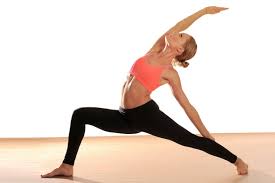Vinyasa, also called “flow” because of the smooth way that the poses run together, is one of the most popular contemporary styles of yoga. It’s a broad classification that encompasses many different types of yoga, including Ashtanga and Power Yoga. In contemporary yoga parlance, Vinyasa stands in opposition to Hatha. Hatha classes tend to focus on one pose at a time with rest in between. In contrast, flow classes string poses together to make a sequence. In vinyasa yoga, each movement is synchronized to a breath. The breath is given primacy, acting as an anchor as you move from one pose to the next. A cat-cow stretch is an example of a very simple vinyasa. The spine is arched on an inhale and rounded on an exhale. A sun salutation sequence is a more complex vinyasa. Each movement in the series is cued by an inhalation or an exhalation of the breath. The literal translation of vinyasa from Sanskrit is “connection.” In terms of yoga asana, we can interpret this as a connection between movement and breath or as the connection between poses in a flowing sequence.
Vinyasa’s strength is in its diversity. If you appreciate having things a little loose and unpredictable and like to keep moving, this style is definitely worth a try. In most cases, there is no single philosophy, rulebook, or sequence that teachers must follow, so there is a lot of room for individual personalities.
After class stay for wine and appetizers, and meet some of your fellow classmates! (September 8th, 5:30 to 6:30, $30)


